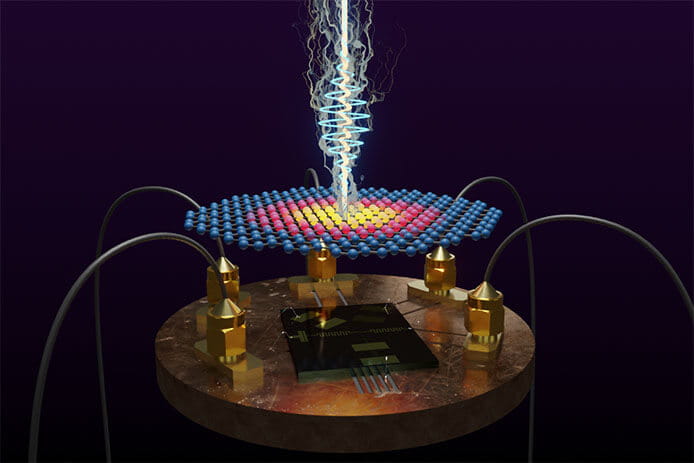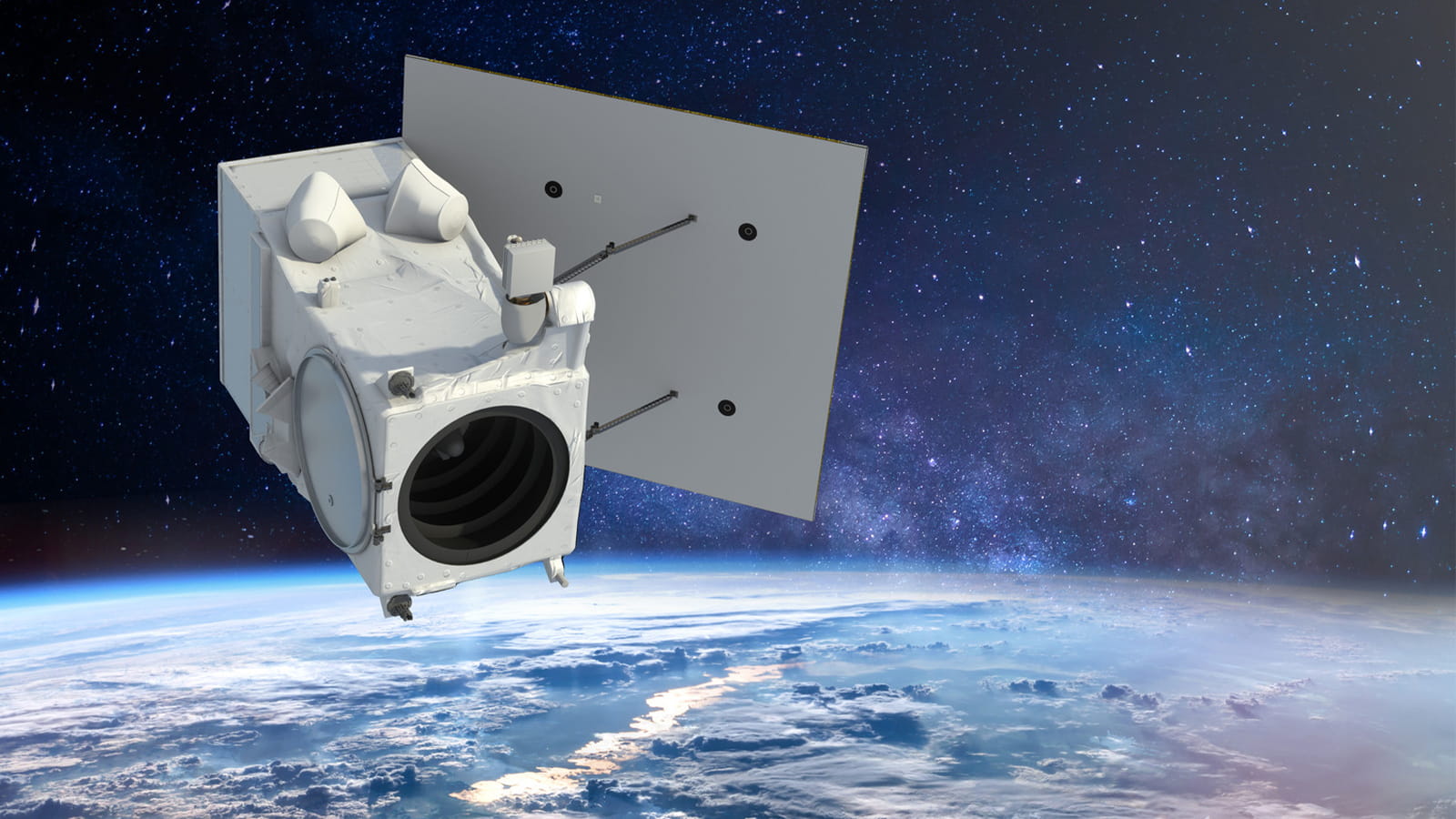Delivering on the promise of graphene
Scientists build thermal microwave sensor with unrivaled sensitivity
Scientists at Raytheon BBN have developed a microwave radiation detector 100,000 times more sensitive than existing systems – a breakthrough with big implications in areas including satellite communications, radar, lidar and even the search for dark matter.
The scientists, working alongside colleagues in academia, built the sensor, called a bolometer, using a material called graphene – a residue of graphite that is one atomic layer thick – and a device called a Josephson junction, which acts as a semiconductor switch to detect infrared radiation at very high speeds with very high sensitivity.
The team, which included scientists from five universities, published their findings in the scientific journal “Nature.”
“We’re trying to push the state of the art and try to solve hard problems for our customers, and sometimes that involves breaking new ground,” said Brad Tousley, president at Raytheon BBN. “In this particular case, we’ve chartered new territory by using graphene and high-speed electronics to open the door to developing high-sensitivity detectors. It opens up all kinds of applications.”
The microwave bolometer’s unrivaled sensitivity opens a wealth of opportunities. It can enhance visibility for future night vision, expand the bandwidth of communication systems and offer more powerful and efficient satellite communications over longer distances. These applications will drive the future technologies of ground-based surveillance of space, long-range infrared imagers and quantum computing.
Raytheon Intelligence & Space, a Raytheon Technologies business, spearheaded a research project in collaboration with academia to discover the most effective way to detect microwave radiation by using a bolometer.
“Being small is the key to a bolometer because given the same amount of radiation, a smaller bolometer will rise to a higher temperature than a bigger bolometer. So, we asked ourselves, ‘How small can we make a bolometer?’” asked Kin Chung Fong, a quantum information processing scientist at Raytheon BBN and a research associate at Harvard University. “In fact, we went all the way to the extreme by using material that’s only one atom layer thick—a material called graphene.”
The revolutionary discovery of the two-dimensional material graphene earned a pair of scientists at the University of Manchester, U.K., the Nobel Prize in Physics in 2010.
“No material, so far, known to humankind can measure such tiny microwave radiation,” Fong said. “It’s the thinnest thermometer that Mother Nature can ever provide.”
Roughly eight years ago, Fong joined a small group of scientists on a crusade to explore how graphene could be used. Working through the years, with the help of Raytheon BBN, he and his team discovered how to isolate a bolometer from its surroundings to prevent any heat leaks.
“This discovery is an example of how Raytheon Technologies and BBN collaborates among ourselves and with academia,” Tousley said. “Similar to Kin Chung, we value employees who serve dual roles as an employee and academic. BBN has historically bridged these two boundaries between the defense industrial base and academia to expand our pool of talent.”
Raytheon BBN has nearly 70 contracts where it partners with universities, either as subcontractors or in a prime role; and partners with more than 25 universities to recruit, perform outreach and conduct technical talks, including the Massachusetts Institute of Technology, Harvard University and Johns Hopkins University.
“We are simply scientists and engineers probing what’s out there and what’s the art of the possible,” Fong said.


